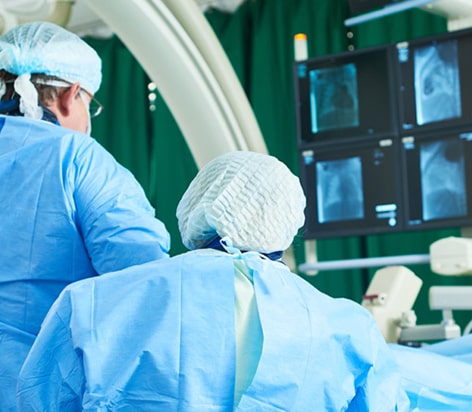
Coronary angioplasty is a percutaneous coronary intervention. It is used to open the blocked heart arteries. This procedure involves using a balloon to widen the blocked arteries, which enhances blood flow to the heart. The procedure is generally combined with a stent placement procedure to reduce the risk of re-narrowing the arteries. These stents may be coated with drugs (drug-eluting stents) to maintain the opening of the artery.